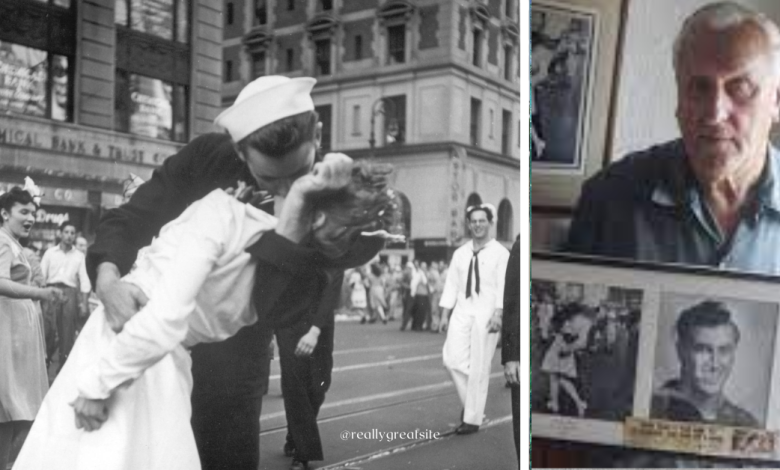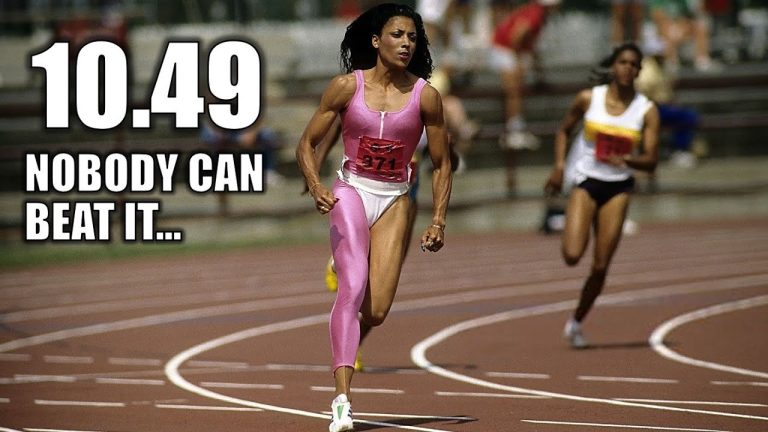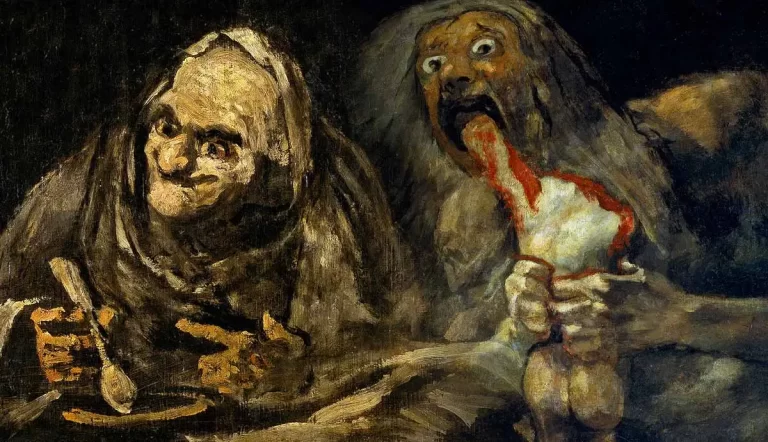Most Famous Kiss Story of All Time
They were strangers, and the picture wasn’t planned. “The Kissing Sailor” tells us the story of how it happened and was captured. This summary covers chapters 9-12.
As a nurse
On August 14, 1945, Greta Zimmer’s day started like any other weekday. She got up, took a quick shower, got dressed, and tied her hair up. Then, she had a quick bite to eat, grabbed her colorful purse, and left her apartment in Manhattan. Greta rushed to the subway station because she was running late for work.
She got off at 33rd and Lexington, just three blocks away from Dr. J. L. Berke’s office. Greta worked as a dental assistant in Manhattan. Her job as a dental assistant gave her independence and distracted her from thinking about the war.
On August 14, Greta went to work wearing her uniform. This helped people know she wasn’t a nurse. Her uniform included a white dress, stockings, shoes, and a cap, which made her look like other caregivers in New York.
While Greta was working as a dental assistant on Tuesday, many patients came in looking excited and happy. They told everyone that the war with Japan was over. Both patients and staff believed them. But Greta wasn’t sure. Even though she wanted to believe it, the war had brought her a lot of sadness. So she was cautious and didn’t join in the celebrations right away.
As the morning went on, more patients came in with good news. Greta tried to ignore the positive news at first, but she couldn’t help but feel hopeful. She listened carefully, thought about it, and started to feel excited as the reports got more definite and encouraging.

After finishing her work before the dentists returned from lunch at 1:00, Greta took her colorful handbag, took off her white dental assistant cap (as was usual), and went to Times Square for her lunch break. Times Square had a big news sign that showed moving letters reporting news. She wanted to see if the things people had been saying earlier were true or just rumors.
When Greta got to Times Square, it was lively. Even though people were celebrating quietly, there was a happy feeling in the air. Businesspeople, women, and soldiers in uniforms were everywhere. Some people were running around, some were walking quickly, and some were standing still, as if waiting for something exciting to happen. Greta didn’t pay much attention to anyone.
As she walked into the square, she passed the stairs to the subway on 42nd Street, a copy of the Statue of Liberty, and Joe Rosenthal’s famous photo. After walking past a big model of Marines raising the flag at Iwo Jima, she looked at the Times Building. She focused on the third-floor windows where there were lights and words moving across them. Greta read the short message quickly, and now she understood what was happening.
Last leave day
On his last day off from the war, PO1 George Mendonsa didn’t pay attention to the news or think much about the war with Japan. After fighting in the Pacific for two years, he figured the war would keep going whether he was there or not. On August 14, 1945, he was thinking about Rita Petry, a girl from Long Island he had met in Rhode Island.
On Tuesday morning, George woke up in a bedroom in Long Island. He had brunch with Rita’s family, then they checked the movie times in The New York Times. They decided to see a matinee at Radio City Music Hall. They thought the 1:05 pm showing of A Bell for Adano would let them get home early in the evening. Later that night, George had to leave for San Francisco.
In a few days, George planned to get on The Sullivans and get ready for the last fights of the war. He expected they’d be going to Japan. He wasn’t happy about it, but he thought it would be right to finish the war there. The war started four years ago when Japan bombed Pearl Harbor. But all that was in the future. He still had one more day in New York.
George put on a nice Navy uniform he got made in Newport. Rita liked how it fit him, but she noticed he didn’t look like other sailors. He didn’t have any badges. She offered to sew one on for him, but George said he’d do it himself with a special stitch he learned on The Sullivans. George didn’t hand in his badge, so he took it with him when they went to the city.
When they got to Manhattan around lunchtime, everyone was talking about Japan surrendering. Rita and George didn’t pay much attention to what people were saying. They took the train to Radio City Music Hall to catch the 1:05 movie.
George and Rita didn’t get to see the end of the movie because something unexpected happened. A worker at the theater knocked on the door and told everyone that World War II was over. The audience at Radio City Music Hall cheered loudly. Even though the official announcement from the White House about Japan surrendering hadn’t come yet, most people didn’t mind the early news.

After hearing the news, George, Rita, and everyone else rushed out of Radio City Music Hall. They were swept up in the excitement and energy of the moment. People were shouting, laughing, and celebrating. They all made their way to Times Square, drawn like magnets to the historic gathering spot.
At Childs on 7th Avenue and 49th Street, George and Rita joined the crowd to toast to the end of the war. The bar was packed, and everyone was grabbing drinks as fast as they could. George didn’t hesitate to drink whatever was offered to him, and even Rita joined in the festivities. After a while, they left the bar and headed to Times Square.
In Times Square, George was overcome with joy and excitement. He was unusually lively, and Rita struggled to keep up with him as he moved through the crowd. George seemed determined to celebrate, and Rita followed along, wondering if he would ever slow down.

As the celebration of Japan’s surrender grew, reporters from different newspapers and magazines rushed to Times Square to capture the spontaneous joy. Photographers from Life magazine were also there, looking for unique photos to show how people felt on this historic day.
Life magazine trusted Alfred Eisenstaedt to capture the moment. Eisenstaedt was known for his powerful photos even before the war began. As a German Jew, he had documented important events, including Mussolini and Hitler’s first meeting in 1934. He also captured scenes from the conflict between Ethiopia and Italy in 1935.
During World War II, Eisenstaedt focused on life in America. He photographed a draft board in Missouri in 1942 and senators entertaining reporters in 1945. Eisenstaedt’s photos showed the impact of the war on the people of the United States.

On the day World War II ended, Eisenstaedt arrived at Times Square dressed in a tan suit with a Leica camera hanging from his neck. Despite standing out in his unique outfit, he managed to blend in with the bustling crowd to find the perfect photo opportunity.
He searched carefully, looking for just the right moment to capture. As the square buzzed with excitement, Eisenstaedt wanted to convey the feeling of the historic occasion through his photo. Standing at just five-foot-four, he knew he had a challenge ahead of him, but he was determined to succeed.
After 1 p.m., Eisenstaedt snapped a picture of women celebrating near the 42nd Street subway stairs, tossing confetti and creating a festive atmosphere. While the scene was charming, it wasn’t exactly what he was looking for.
After taking that photo, he scanned the area for something more iconic. He focused on the intersection of Broadway and 7th Avenue, waiting patiently for the perfect shot. Then, he noticed Greta Zimmer standing near a replica of the Statue of Liberty and a model of the flag-raising at Iwo Jima.
Greta wasn’t there to admire the sights or join in the celebrations. She was there to confirm whether Japan had surrendered to the U.S. As she looked up at the Times Building with its illuminated “VJ” message, a faint smile crossed her lips. In that moment, she realized that the war was finally over.
Surrounded by hundreds of people, Greta stood out in the crowd, becoming the center of attention in Times Square. Eisenstaedt saw her and knew he had found his subject.

George Mendonsa and Rita Petry left Childs on 49th Street and headed towards 42nd Street, with Rita following behind George. Eisenstaedt kept an eye out for the perfect shot as he moved through the bustling crowd.
As they moved up Times Square, Eisenstaedt spotted a fast-moving sailor kissing a woman. The sailor then headed south on Broadway and 7th Avenue. Eisenstaedt quickly adjusted his course to capture the moment.
He had to navigate through the crowded street, dodging people to keep the sailor in his sights. Meanwhile, Greta turned right as the Times zipper was opened. George crossed 44th and 7th Avenue, trying to get away from Rita. In the midst of the chaos, the photographer, sailor, and dental assistant all collided.
The sailor, fueled by alcohol and memories of his time aboard The Sullivans during the war, focused on a woman he thought was a nurse. He remembered the sacrifices made by his fellow sailors and believed that the war would finally come to an end. With this realization, he made his move towards Greta.
George continued to move forward, his attention fixed on Greta, while Rita lagged behind. Greta reminded him of the wartime nurses who provided comfort and care amidst the chaos of the war. As he approached her, he was unaware of the noise and commotion happening around them.
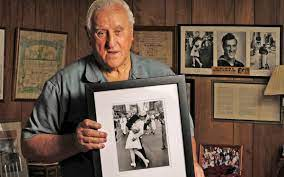
George stopped abruptly before colliding with Greta, but his upper body still leaned over her. Greta was pushed back and to the right by his movement. As he passed her, he grabbed her waist, pulling her towards him. Although Greta tried to distance herself from him, she couldn’t escape his grasp. With her right arm pinned between them, she instinctively raised her left arm in defense, but soon realized she wasn’t in danger.
The sailor’s left arm wrapped around her neck as they kissed, while his other hand signaled restraint or caution. His embrace was a mix of forcefulness, tenderness, and uncertainty. He held onto her tightly, prolonging the moment, as she eventually gave in to the unexpected encounter. They parted ways, leaving behind the warmth of their embrace on that July afternoon in New York.
George, initially confused by the encounter, believed he owned Times Square, but it was the photographer, Alfred Eisenstaedt, who captured the moment. Eisenstaedt took four photos of the kissing couple, with his iconic shot becoming one of the most famous images of V-J Day, 1945. This photo symbolized the hard-fought victory and the long-awaited peace that followed the end of World War II.
In addition to Eisenstaedt, Lieutenant Victor Jorgensen also captured the moment in his own photograph. Although Greta returned to her normal routine after the war’s end, unaware of the photos taken that day, her unexpected kiss became immortalized in history.
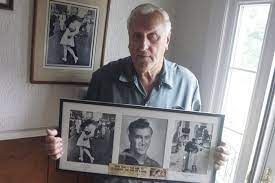
George wasn’t aware he was photographed. He grinned at Rita after the kiss and didn’t say much about it. Surprisingly, Rita didn’t seem to mind. Back on August 14, 1945, what George did was okay, but not anymore. George and Rita didn’t think it was a big deal and took the subway to Rita’s parents’ house on 42nd Street. Later that evening, the Petrys drove George to LaGuardia Airport for his midnight flight to San Francisco. It wasn’t until 1980 that Eisenstaedt’s famous photo of V-J Day in Times Square was found.
For the Brief Readers :
Before their famous kiss, Greta Zimmer and George Mendonsa had never met, and it wasn’t until years later that they found out they were in a picture together. However, their kiss became well-known after it appeared on the cover of Life Magazine to celebrate the end of World War II. Many people have copied the kiss in Times Square, and there are even big statues of it in Sarasota, Florida, and San Diego, California.
But some people argue about the picture. Since Greta and George didn’t know each other, some think the kiss could be seen as a type of assault. Also, Mendonsa had been drinking, and Zimmer says he didn’t realize she was there until he hugged her and kissed her.
“I thought he was really strong. He just held me tight. As for the kiss, I’m not sure,” Zimmer said in an interview with the Veterans History Project in 2005. “It was just one person having fun. It wasn’t a romantic moment.”
